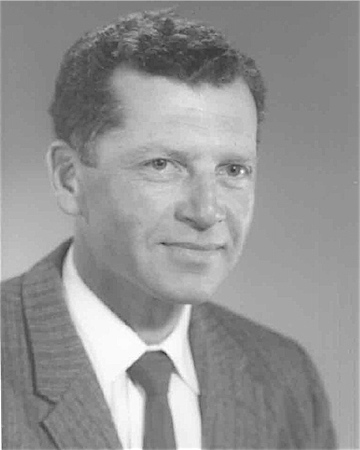

|

|
IN MEMORIAM
Lawrence Ruby
Professor of Nuclear Engineering, Emeritus
UC Berkeley
1925 - 2010
Lawrence Ruby, professor of nuclear engineering, emeritus, at the University of California, Berkeley, died in Lake Oswego, Oregon, on May 13, 2010.
Lawrence (Larry) Ruby was born on July 25, 1925, in Detroit, Michigan. He studied physics at the University of California, Los Angeles, receiving the degrees of B.A., M.A., and Ph.D. (1951), after which he arrived in Berkeley, to work at the Radiation Laboratory for Ernest Lawrence, on his then-secret Materials Testing Accelerator project (MTA) for plutonium production. The MTA project was short-lived, but over the next decade Ruby continued accelerator physics research at Berkeley. His early work on small-model sector-focus (Thomas) cyclotrons was precursor to what evolved as the 88-inch cyclotron in Berkeley and the Triumf meson factory at the University of British Columbia. Work started in 1954 on development of an ion source for the controlled fusion program was redirected in the cold-war environment of 1955 to assisting the Sandia Corporation with problems concerning the design and development of neutron sources and neutron counting techniques. Ruby’s work, although classified, was very highly regarded by the cognizant scientific and national defense community and led to his appointment to a number of oversight boards, including a working group for implementing relevant military cooperation between the United States and the United Kingdom.
On the basis of this body of work, in 1960 Ruby was appointed an associate professor in the new Department of Nuclear Engineering at UC Berkeley. A National Science Foundation grant had been received to build and install a TRIGA Mark III nuclear reactor in the planned Etcheverry Hall on campus. Through the first half of the 1960s Ruby served on the Buildings and Campus Development Committee and as chairman of the Nuclear Engineering Reactor Committee. In these positions he played a key role in all design and analysis aspects of both the new building and the reactor that were necessary for the subsequent reactor licensing. On completion of the reactor, Ruby served as its first supervisor, setting up all of the necessary operations and experimentation protocols. His own experimental programs on the reactor were in the area of reactor kinetics, primarily using pulsed neutrons and reactor noise measurements to determine sub-critical reactivity. Through the next decade Ruby’s work and publications included, in addition to the reactor studies, pulsed neutron work and ion-source development for neutral-beam fuel injection into fusion reactors.
Ruby’s devotion to education throughout his Berkeley career, as well as into retirement, requires particular mention. In the early history of the nuclear engineering department, he played a major role in the development of experiments for the graduate laboratory course. At about the time of reactor commissioning, Ruby created a new course designed for a nontechnical audience, Applications of Nuclear Energy. When the undergraduate program was introduced, he was again a leader not only with the laboratory course, but with the curriculum overall. His ideas for improved teaching of subject material frequently found their way into the American Journal of Physics, even well into retirement.
In 1987, after the decommissioning of the TRIGA reactor, Ruby retired from Berkeley and moved to the Portland, Oregon, area, but then accepted a half-time position at Reed College, as professor and director of their smaller TRIGA. After a successful four-year stint at Reed, Ruby again retired, but continued part-time teaching of mathematics and science courses at The Oregon Graduate Institute and other schools in the area. He also became very active in the Oregon chapter of the American Association of Physics Teachers (AAPT), presenting papers at meetings and publishing articles in the American Journal of Physics and The Physics Teacher, up until the time of his death.
Ruby is survived by his wife, Judith; a daughter, Jill; two sons, Peter and Fred; and three grandchildren. He will be missed by his many friends, among whom are the undersigned.
Selig Kaplan
Paul Chambre
Donald Olander
2010